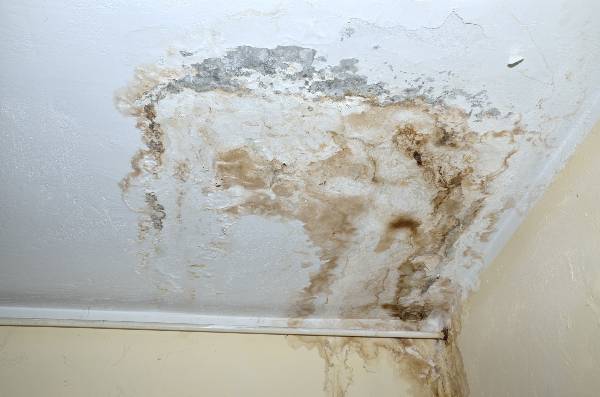How do you actually feel with regards to Locating water leaks?

Early discovery of dripping water lines can minimize a prospective calamity. Some small water leakages may not be noticeable.
1. Take A Look At the Water Meter
Every home has a water meter. Examining it is a guaranteed manner in which assists you uncover leaks. For starters, switch off all the water sources. Make certain no one will purge, use the faucet, shower, run the cleaning device or dish washer. From there, go to the meter and watch if it will transform. Since no one is using it, there must be no activities. If it moves, that indicates a fast-moving leak. If you detect no changes, wait an hour or 2 and also inspect back again. This means you may have a slow leak that could even be underground.
2. Check Water Usage
Assess your water costs and track your water usage. As the one paying it, you must notice if there are any discrepancies. If you spot sudden changes, regardless of your intake coinciding, it means that you have leakages in your plumbing system. Keep in mind, your water bill must fall under the very same range on a monthly basis. An unexpected spike in your costs indicates a fast-moving leak.
On the other hand, a constant increase monthly, even with the exact same behaviors, reveals you have a slow leak that's also gradually rising. Call a plumber to extensively check your building, specifically if you feel a cozy area on your flooring with piping underneath.
3. Do a Food Coloring Examination
30% comes from bathrooms when it comes to water usage. Examination to see if they are running appropriately. Decrease specks of food color in the container and also wait 10 mins. If the shade somehow infiltrates your bowl during that time without flushing, there's a leak between the tank and also bowl.
4. Asses Exterior Lines
Don't fail to remember to examine your outdoor water lines too. Test spigots by connecting a yard tube. Should water seep out of the connection, you have a loose rubber gasket. Replace this as well as make sure all links are limited. If you have actually obtained an automatic sprinkler, it will certainly aid get it properly examined and kept each year. One little leakage can squander tons of water and also surge your water bill.
5. Inspect and Assess the Circumstance
Homeowners need to make it a routine to inspect under the sink counters and also even inside closets for any kind of bad odor or mold and mildew growth. These two warnings indicate a leak so timely focus is needed. Doing regular evaluations, also bi-annually, can conserve you from a major problem.
If you understand your house is currently old, maintain a careful eye on your heating units, pipes, pipelines and so on. Look for discolorations as well as deteriorating as a lot of pipelines as well as home appliances have a life span. They will certainly likewise naturally deteriorate as a result of damage. If you suspect leaking water lines in your plumbing system, do not wait on it to escalate. Call an expert plumber today so you don't wind up with a horrible mess in your home.
Early detection of leaking water lines can alleviate a possible disaster. Some small water leakages might not be visible. Inspecting it is a guaranteed means that aids you discover leaks. One small leakage can throw away tons of water and surge your water expense.
If you presume dripping water lines in your plumbing system, do not wait for it to intensify.
WARNING SIGNS OF WATER LEAKAGE BEHIND THE WALL
PERSISTENT MUSTY ODORS
As water slowly drips from a leaky pipe inside the wall, flooring and sheetrock stay damp and develop an odor similar to wet cardboard. It generates a musty smell that can help you find hidden leaks.
MOLD IN UNUSUAL AREAS
Mold usually grows in wet areas like kitchens, baths and laundry rooms. If you spot the stuff on walls or baseboards in other rooms of the house, it’s a good indicator of undetected water leaks.
STAINS THAT GROW
When mold thrives around a leaky pipe, it sometimes takes hold on the inside surface of the affected wall. A growing stain on otherwise clean sheetrock is often your sign of a hidden plumbing problem.
PEELING OR BUBBLING WALLPAPER / PAINT
This clue is easy to miss in rooms that don’t get much use. When you see wallpaper separating along seams or paint bubbling or flaking off the wall, blame sheetrock that stays wet because of an undetected leak.
BUCKLED CEILINGS AND STAINED FLOORS
If ceilings or floors in bathrooms, kitchens or laundry areas develop structural problems, don’t rule out constant damp inside the walls. Wet sheetrock can affect adjacent framing, flooring and ceilings.
https://www.servicemasterbyzaba.com/blog/how-to-detect-water-leakage-in-walls/

I stumbled upon that piece of writing about Leaking water lines when doing a lookup on the internet. Enjoyed our review? Please share it. Let someone else check it out. Kudos for your time. Kindly check our site back soon.
Comments on “6 Ways to Discover Concealed Water Leaks in Your Home”